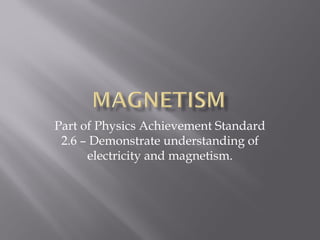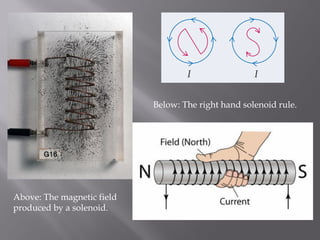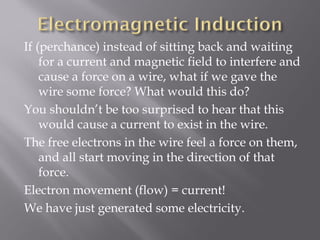This document contains information about electricity and magnetism concepts including:
1. It defines key equations for electric potential, current, resistance, and force due to magnetic fields.
2. It discusses how moving charges experience forces in magnetic fields, and how this relates to phenomena like the aurora borealis and the operation of motors and generators.
3. It introduces concepts like induced currents and how changing magnetic fields can generate electric currents and voltages in conductors according to Lenz's law, which has applications in technologies like electric generators.




























